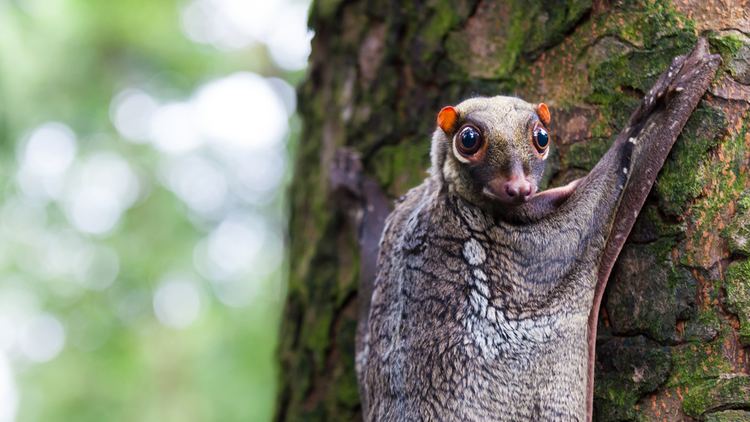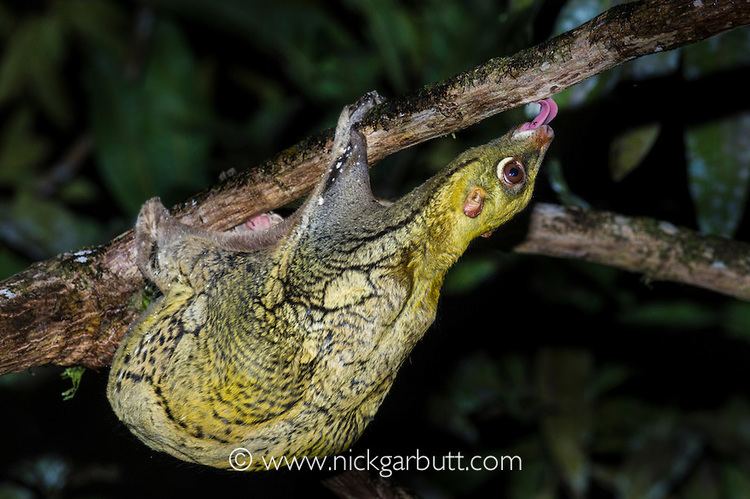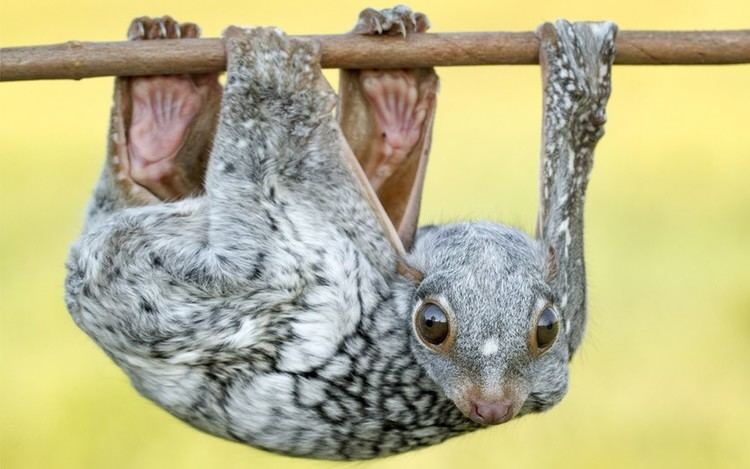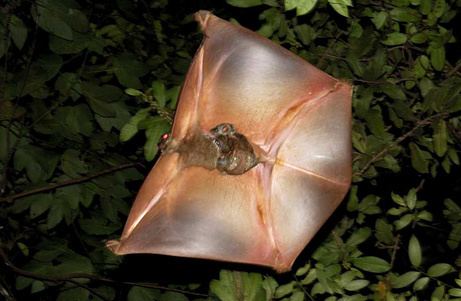Order Dermoptera Scientific name Galeopterus variegatus Higher classification Galeopterus | Phylum Chordata Family Cynocephalidae Rank Species | |
 | ||
Genus GaleopterusThomas, 1908 Similar Colugo, Philippine flying lemur, Tufted deer, Gerenuk, Zebra duiker | ||
The sunda flying lemur
The Sunda flying lemur (Galeopterus variegatus), also known as the Malayan flying lemur, Sunda Colugo or Malayan colugo, is a species of colugo. Until recently, it was thought to be one of only two species of flying lemur, the other being the Philippine flying lemur which is found only in the Philippines. The Sunda flying lemur is found throughout Southeast Asia in Indonesia, Thailand, Malaysia, and Singapore.
Contents
- The sunda flying lemur
- Malaysian flying squirrel sunda flying lemur
- Classification and evolution
- Behaviour and ecology
- Distributions and habitats
- References

The Sunda flying lemur is not a lemur and does not fly. Instead, it glides as it leaps among trees. It is strictly arboreal, is active at night, and feeds on soft plant parts such as young leaves, shoots, flowers, and fruits. After a 60-day gestation period, a single offspring is carried on the mother's abdomen held by a large skin membrane. It is a forest-dependent species.

The head-body length of Sunda flying lemur is about 33 to 42 cm (13 to 17 in). Its tail length measures 18 to 27 cm (7.1 to 10.6 in), and its weight is 0.9 to 1.3 kg (2.0 to 2.9 lb).

The Sunda flying lemur is protected by national legislation. In addition to deforestation and loss of habitat, local subsistence hunting poses a serious threat to this animal. Competition with the plantain squirrel (Callosciurus notatus) represents another challenge for this species. More information is needed on population declines, but at present, the rate of the decline is not believed to merit listing in any category lower than Least Concern.
Malaysian flying squirrel sunda flying lemur
Classification and evolution

The Sunda flying lemurs' two forms are not morphologically distinct from one another; the large form occurs on the mainland of the Sunda Shelf area and the mainland of Southeast Asia, while the dwarf form occurs in central Laos and some other adjacent islands. The Laos specimen is smaller (about 20%) than the other known mainland population. Despite the large and dwarf forms, four subspecies are known: G. v. variegatus (Java), G. v. temminckii (Sumatra), G. v. borneanus (Borneo), and G. v. peninsulae (Peninsular Malaysia and mainland of Southeast Asia) incorporating on the genetic species concept due to geographic isolation and genetic divergence. Recent molecular and morphological data provide the evidence that the mainland, Javan, and Bornean Sunda flying lemur subspecies may be recognised as three separate species in the genus Galeopterus.
Behaviour and ecology

The Sunda flying lemur is a skillful climber, but is helpless when on the ground. Its gliding membrane connects from the neck, extending along the limbs to the tips of the fingers, toes and nails. This kite-shaped skin is known as a patagium, which is expanded for gliding. It can glide over a distance of 100 m with a loss of less than 10 m in elevation. It can maneuver and navigate while gliding, but strong rain and wind can affect its ability to glide. Gliding usually occurs in open areas or high in the canopy, especially in dense tropical rainforest. The Sunda flying lemur needs a certain distance to glide and to land to avoid injury. The highest landing forces are experienced after short glides; longer glides lead to softer landings, due to the colugo's ability to brake its glide aerodynamically. The ability to glide increases a colugo's access to scattered food resources in the rainforest, without increasing exposure to terrestrial or arboreal predators.
In general, the diet of the Sunda flying lemur consists mainly of leaves. It usually consumes leaves with less potassium and nitrogen-containing compounds, but with higher tannin. It also feeds on buds, shoots, coconut flowers, durian flowers, fruits, and sap from selected tree species. It also feeds on insects in Sarawak, Malaysian Borneo. The selected food sources depend on the localities, habitat, vegetation types, and availability.
The Sunda flying lemur mainly forages in tree canopies. It may forage on several different tree species in a single night, or on a single species. It can also be seen licking tree bark of selected tree species to obtain water, nutrients, salts, and minerals. Though the Sunda flying lemur has been reported to also occur in gardens and plantations, the species resides in forests primarily.
Distributions and habitats
The Sunda flying lemur is widely distributed throughout Southeast Asia, ranging from the Sunda Shelf mainland to other islands – Northern Laos, Cambodia, Vietnam, Thailand, Malaysia (Peninsular, Sabah and Sarawak), Singapore, Brunei, Indonesia (Kalimantan, Sumatera, Bali, Java), and many adjacent islands. Conversely, the Philippine flying lemur (C. volans) is confined to the southern parts of the Philippines only.
The Sunda flying lemur is adapted to many different vegetation types, including gardens, primary and secondary forest, rubber and coconut plantations, fruit orchards (dusun), mangrove swamps, lowlands and upland forests, tree plantations, lowland dipterocarp forests, and mountainous areas. However, not all of the mentioned habitats can sustain large colugo populations.
